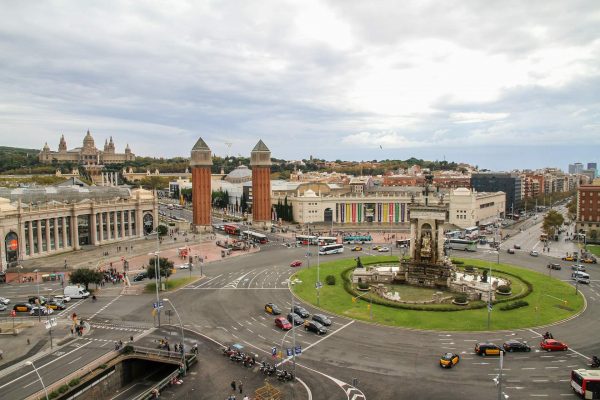If you’ve never driven on the right-hand side of the road, there are some challenges ahead for you. There are two options: you can take your right-hand drive car to Europe or you can hire a left-hand drive car when you’re in Europe.
If you take your car to Europe you’ll have to switch to driving on the other side of the road but will have the disadvantage of limited visibility for overtaking. This is because when you overtake to your left, the steering wheel will be on the right, meaning you won’t be able to see as far ahead. As your forward visibility is generally reduced it’s best to increase your following distance to three seconds rather than two seconds.
Some signs, which are positioned for people driving with the wheel on the left, may not be quite as visible when your wheel is on the right; pay attention at junctions!
If you hire a car in Europe, be sure to check out our car hire guide to make sure you don’t get ripped off. The first thing to do when you pick up your car is to set up your mirrors and then familiarise yourself with the controls (i.e. indicators and lights) and the dashboard (remember that speeds will be in kilometres per hour, not miles per hour). The rear-view mirror will be on your right rather than your left and it might take you a few hours to get used to glancing up to the right rather than up to the left to check behind you. The accelerator, brake and clutch will be in the same configuration.
Once you begin driving you’ll need to consciously judge where your car is in the lane. There will be more car on your right than you are used to and that often means you’ll position your car far too far to the right. This makes it more likely you’ll scrape your wheels on kerbs (especially when parallel parking), or scrape the front right-hand corner or the right-hand side of the car when manoeuvring. Look as far ahead as you can as it makes it easier to position your vehicle. In your peripheral vision, you’ll see the front corner of the car and you can line this up with the centre line of the road. If you want to get an idea of how close you are to the centre line, temporarily angle your left door mirror down so that you can see the centre line in relation to your car while you are driving.
Roundabouts will seem unnatural – remember that you are giving way to the left, not the right.

This roundabout in Barcelona has 7 lanes with traffic lights – it’s not easy
Take extra care if you are driving on unlaned rural roads with very little traffic as it’s very easy to slip back into driving on the left, particularly if you are in your own right-hand drive car.

Which side of the road are we supposed to be on? It’s easy to forget in countries like Iceland where you can drive a couple of hours and not see another vehicle
Ask your passenger to help you by pointing out potential dangers ahead. You’ll have to resist the temptation to look at scenery and monuments.

Keep your eyes on the road, not on the monuments
Knowing the road rules
Make sure you know the signs and road markings for the countries you’ll be driving in. Europe generally adheres to the Vienna Convention on Road Signs and Signals, meaning most signs will be similar, if not identical.
There are also some European countries that have road rules which are different to the UK, such as carrying a fire extinguisher, not wearing headphones and not eating while driving. Blood alcohol limits vary from country-to-country, so it’s best to avoid drinking alcohol altogether if you are driving.
